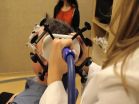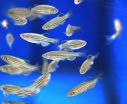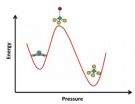(Press-News.org) Astronomers have used a worldwide network of radio telescopes to resolve a controversy over the distance to a famous star cluster -- a controversy that posed a potential challenge to scientists' basic understanding of how stars form and evolve. The new work shows that the measurement made by a cosmic-mapping research satellite was wrong.
The astronomers studied the Pleiades, the famous "Seven Sisters" star cluster in the constellation Taurus, easily seen in the winter sky. The cluster includes hundreds of young, hot stars formed about 100 million years ago. As a nearby example of such young clusters, the Pleiades have served as a key "cosmic laboratory" for refining scientists' understanding of how similar clusters form. In addition, astronomers have used the measured physical characteristics of Pleiades stars as a tool for estimating the distance to other, more distant, clusters.
Until the 1990s, the consensus was that the Pleiades are about 430 light-years from Earth. However, the European satellite Hipparcos, launched in 1989 to precisely measure the positions and distances of thousands of stars, produced a distance measurement of only about 390 light-years.
"That may not seem like a huge difference, but, in order to fit the physical characteristics of the Pleiades stars, it challenged our general understanding of how stars form and evolve," said Carl Melis, of the University of California, San Diego. "To fit the Hipparcos distance measurement, some astronomers even suggested that some type of new and unknown physics had to be at work in such young stars," he added.
To solve the problem, Melis and his colleagues used a global network of radio telescopes to make the most accurate possible distance measurement. The network included the Very Long Baseline Array (VLBA), a system of 10 radio telescopes ranging from Hawaii to the Virgin Islands; the Robert C. Byrd Green Bank Telescope in West Virginia; the 1,000-foot-diameter William E. Gordon Telescope of the Arecibo Observatory in Puerto Rico; and the Effelsberg Radio Telescope in Germany.
"Using these telescopes working together, we had the equivalent of a telescope the size of the Earth," said Amy Miouduszewski, of the National Radio Astronomy Observatory (NRAO). "That gave us the ability to make extremely accurate position measurements -- the equivalent of measuring the thickness of a quarter in Los Angeles as seen from New York," she added.
The astronomers used this system to observe several Pleiades stars over about a year and a half to precisely measure the apparent shift in each star's position caused by the Earth's rotation around the Sun. Seen at opposite ends of the Earth's orbit, a star appears to move slightly against the backdrop of more-distant cosmic objects. Called parallax, the technique is the most accurate distance-measuring method astronomers have, and relies on simple trigonometry.
The result of their work is a distance to the Pleiades of 443 light-years, accurate, the astronomers said, to within one percent. This is the most accurate and precise measurement yet made of the Pleiades distance.
"This is a relief," Melis said, because the newly-measured distance is close enough to the pre-Hipparcos distance that the standard scientific models of star formation accurately represent the stars in the Pleiades.
"The question now is what happened to Hipparcos?" Melis said. Over four years of operation, the spacecraft measured distances to 118,000 stars. The cause of its error in measuring the distance to the Pleiades is unknown. Another spacecraft, Gaia, launched in December of 2013, will use similar technology to measure distances of about one billion stars.
"Radio-telescope systems such as the one we used for the Pleiades will provide a crucial cross-check to insure the accuracy of Gaia's measurements," said Mark Reid, of the Harvard-Smithsonian Center for Astrophysics.
Many ancient cultures, including Native Americans, used the Pleiades as a test of vision. The more Pleiades stars one can discern -- typically five to nine -- the better one's vision.
"Now we've used a system that provides modern astronomy's sharpest 'vision' to solve a longstanding scientific debate about the Pleiades themselves," said Melis.
Melis, Miouduszewski, and Reid worked with John Stauffer of the Spitzer Science Center, and Geoffrey Bower of the Academia Sinica Institute of Astronomy and Astrophysics. The scientists published their findings in the 29 August issue of the journal Science.
INFORMATION:
The National Radio Astronomy Observatory is a facility of the National Science Foundation, operated under cooperative agreement by Associated Universities, Inc.
A link to the release that will be live after the embargo lifts can be found here: https://public.nrao.edu/news/pressreleases/radio-telescope-settle-controversy
Radio telescopes settle controversy over distance to Pleiades
Satellite's measurement wrong, new observations show
2014-08-28
ELSE PRESS RELEASES FROM THIS DATE:
New research reveals how wild rabbits were genetically transformed into tame rabbits
2014-08-28
The genetic changes that transformed wild animals into domesticated forms have long been a mystery. An international team of scientists has now made a breakthrough by showing that many genes controlling the development of the brain and the nervous system were particularly important for rabbit domestication. The study is published today in Science and gives answers to many genetic questions.
The domestication of animals and plants, a prerequisite for the development of agriculture, is one of the most important technological revolutions during human history. Domestication ...
Electric current to brain boosts memory
2014-08-28
VIDEO:
Stimulating a region in the brain with non-invasive electrical current using magnetic pulses (Transcranial Magnetic Stimulation) improves memory, reports a new Northwestern Medicine study in Science. The discovery opens...
Click here for more information.
CHICAGO --- Stimulating a particular region in the brain via non-invasive delivery of electrical current using magnetic pulses, called Transcranial Magnetic Stimulation, improves memory, reports a new Northwestern Medicine® ...
Less than $200 million would conserve precious Atlantic Forest in Brazil, say researchers
2014-08-28
Brazil could conserve its valuable Atlantic Forest by investing just 0.01 per cent of its annual GDP, according to a new study.
The Atlantic Forest (Mata Atlântica) is one of the most important and threatened biodiversity hotspots in the world, containing the only living examples of nearly 10,000 species of plant and more bird species than all of Europe.
Situated along the Atlantic coast of Brazil, it once covered an area of nearly 1.5 million square kilometres. Today, the forest is home to more than 130 million people and it covers only 160,000 km2, because of deforestation. ...
Home is where the microbes are
2014-08-28
A person's home is their castle, and they populate it with their own subjects: millions and millions of bacteria.
A study published today in Science provides a detailed analysis of the microbes that live in houses and apartments. The study was conducted by researchers from the U.S. Department of Energy's Argonne National Laboratory and the University of Chicago.
The results shed light on the complicated interaction between humans and the microbes that live on and around us. Mounting evidence suggests that these microscopic, teeming communities play a role in human ...
New DNA study unravels the settlement history of the New World Arctic
2014-08-28
We know people have lived in the New World Arctic for about 5,000 years. Archaeological evidence clearly shows that a variety of cultures survived the harsh climate in Alaska, Canada and Greenland for thousands of years. Despite this, there are several unanswered questions about these people: Where did they come from? Did they come in several waves? When did they arrive? Who are their descendants? And who can call themselves the indigenous peoples of the Arctic? We can now answer some of these questions, thanks to a comprehensive DNA study of current and former inhabitants ...
Penn-NIH team discover new type of cell movement
2014-08-28
VIDEO:
Penn and NIH researchers have demonstrated a never-before characterized type of cell movement. In this video, a cell's vimentin cytoskeleton (green) pulls the nucleus (red) forward to generate a high-pressure...
Click here for more information.
For decades, researchers have used petri dishes to study cell movement. These classic tissue culture tools, however, only permit two-dimensional movement, very different from the three-dimensional movements that cells make in a ...
How the zebrafish gets its stripes
2014-08-28
This news release is available in German. The zebrafish, a small fresh water fish, owes its name to a striking pattern of blue stripes alternating with golden stripes. Three major pigment cell types, black cells, reflective silvery cells, and yellow cells emerge during growth in the skin of the tiny juvenile fish and arrange as a multilayered mosaic to compose the characteristic colour pattern.
While it was known that all three cell types have to interact to form proper stripes, the embryonic origin of the pigment cells that develop the stripes of the adult fish has ...
Watching the structure of glass under pressure
2014-08-28
Glass has many applications that call for different properties, such as resistance to thermal shock or to chemically harsh environments. Glassmakers commonly use additives such as boron oxide to tweak these properties by changing the atomic structure of glass. Now researchers at the University of California, Davis, have for the first time captured atoms in borosilicate glass flipping from one structure to another as it is placed under high pressure.
The findings may have implications for understanding how glasses and similar "amorphous" materials respond at the atomic ...
Bradley Hospital collaborative study identifies genetic change in autism-related gene
2014-08-28
PROVIDENCE, R.I. – A new study from Bradley Hospital has identified a genetic change in a recently identified autism-associated gene, which may provide further insight into the causes of autism. The study, now published online in the Journal of Medical Genetics, presents findings that likely represent a definitive clinical marker for some patients' developmental disabilities.
Using whole-exome sequencing – a method that examines the parts of genes that regulate protein, called exons - the team identified a genetic change in a newly recognized autism-associated gene, Activity-Dependent ...
Yale study identifies possible bacterial drivers of IBD
2014-08-28
Yale University researchers have identified a handful of bacterial culprits that may drive inflammatory bowel diseases (IBD) such as Crohn's disease and ulcerative colitis, using patients' own intestinal immune responses as a guide.
The findings are published Aug. 28 in the journal Cell.
Trillions of bacteria exist within the human intestinal microbiota, which plays a critical role in the development and progression of IBD. Yet it's thought that only a small number of bacterial species affect a person's susceptibility to IBD and its potential severity.
"A handful ...
LAST 30 PRESS RELEASES:
Personalised “cocktails” of antibiotics, probiotics and prebiotics hold great promise in treating a common form of irritable bowel syndrome, pilot study finds
Experts developing immune-enhancing therapies to target tuberculosis
Making transfusion-transmitted malaria in Europe a thing of the past
Experts developing way to harness Nobel Prize winning CRISPR technology to deal with antimicrobial resistance (AMR)
CRISPR is promising to tackle antimicrobial resistance, but remember bacteria can fight back
Ancient Maya blessed their ballcourts
Curran named Fellow of SAE, ASME
Computer scientists unveil novel attacks on cybersecurity
Florida International University graduate student selected for inaugural IDEA2 public policy fellowship
Gene linked to epilepsy, autism decoded in new study
OHSU study finds big jump in addiction treatment at community health clinics
Location, location, location
Getting dynamic information from static snapshots
Food insecurity is significant among inhabitants of the region affected by the Belo Monte dam in Brazil
The Society of Thoracic Surgeons launches new valve surgery risk calculators
Component of keto diet plus immunotherapy may reduce prostate cancer
New circuit boards can be repeatedly recycled
Blood test finds knee osteoarthritis up to eight years before it appears on x-rays
April research news from the Ecological Society of America
Antimicrobial resistance crisis: “Antibiotics are not magic bullets”
Florida dolphin found with highly pathogenic avian flu: Report
Barcodes expand range of high-resolution sensor
DOE Under Secretary for Science and Innovation visits Jefferson Lab
Research expo highlights student and faculty creativity
Imaging technique shows new details of peptide structures
MD Anderson and RUSH unveil RUSH MD Anderson Cancer Center
Tomography-based digital twins of Nd-Fe-b magnets
People with rare longevity mutation may also be protected from cardiovascular disease
Mobile device location data is already used by private companies, so why not for studying human-wildlife interactions, scientists ask
Test reveals mice think like babies
[Press-News.org] Radio telescopes settle controversy over distance to PleiadesSatellite's measurement wrong, new observations show





